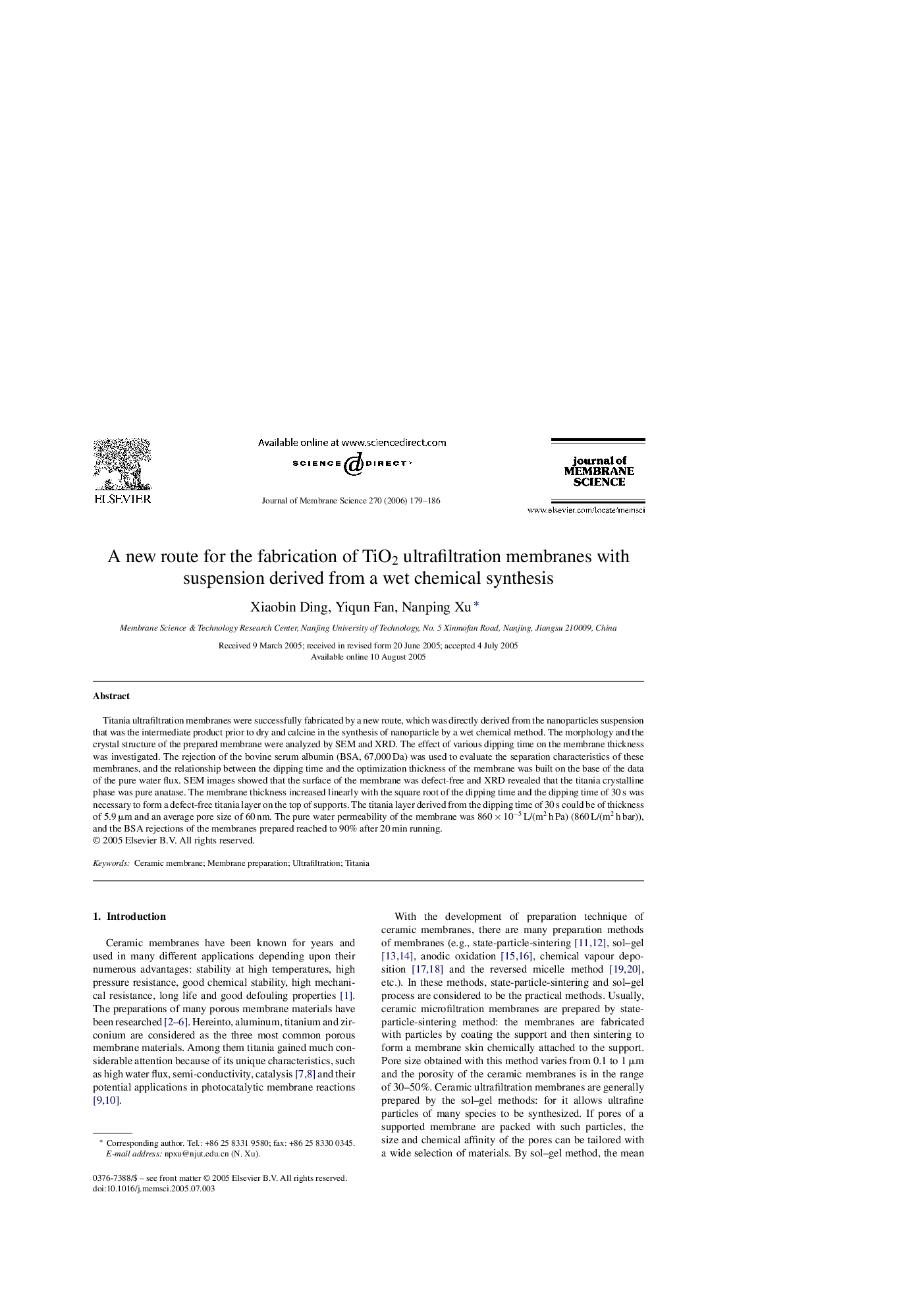| Article ID | Journal | Published Year | Pages | File Type |
|---|---|---|---|---|
| 639678 | Journal of Membrane Science | 2006 | 8 Pages |
Titania ultrafiltration membranes were successfully fabricated by a new route, which was directly derived from the nanoparticles suspension that was the intermediate product prior to dry and calcine in the synthesis of nanoparticle by a wet chemical method. The morphology and the crystal structure of the prepared membrane were analyzed by SEM and XRD. The effect of various dipping time on the membrane thickness was investigated. The rejection of the bovine serum albumin (BSA, 67,000 Da) was used to evaluate the separation characteristics of these membranes, and the relationship between the dipping time and the optimization thickness of the membrane was built on the base of the data of the pure water flux. SEM images showed that the surface of the membrane was defect-free and XRD revealed that the titania crystalline phase was pure anatase. The membrane thickness increased linearly with the square root of the dipping time and the dipping time of 30 s was necessary to form a defect-free titania layer on the top of supports. The titania layer derived from the dipping time of 30 s could be of thickness of 5.9 μm and an average pore size of 60 nm. The pure water permeability of the membrane was 860 × 10−5 L/(m2 h Pa) (860 L/(m2 h bar)), and the BSA rejections of the membranes prepared reached to 90% after 20 min running.
